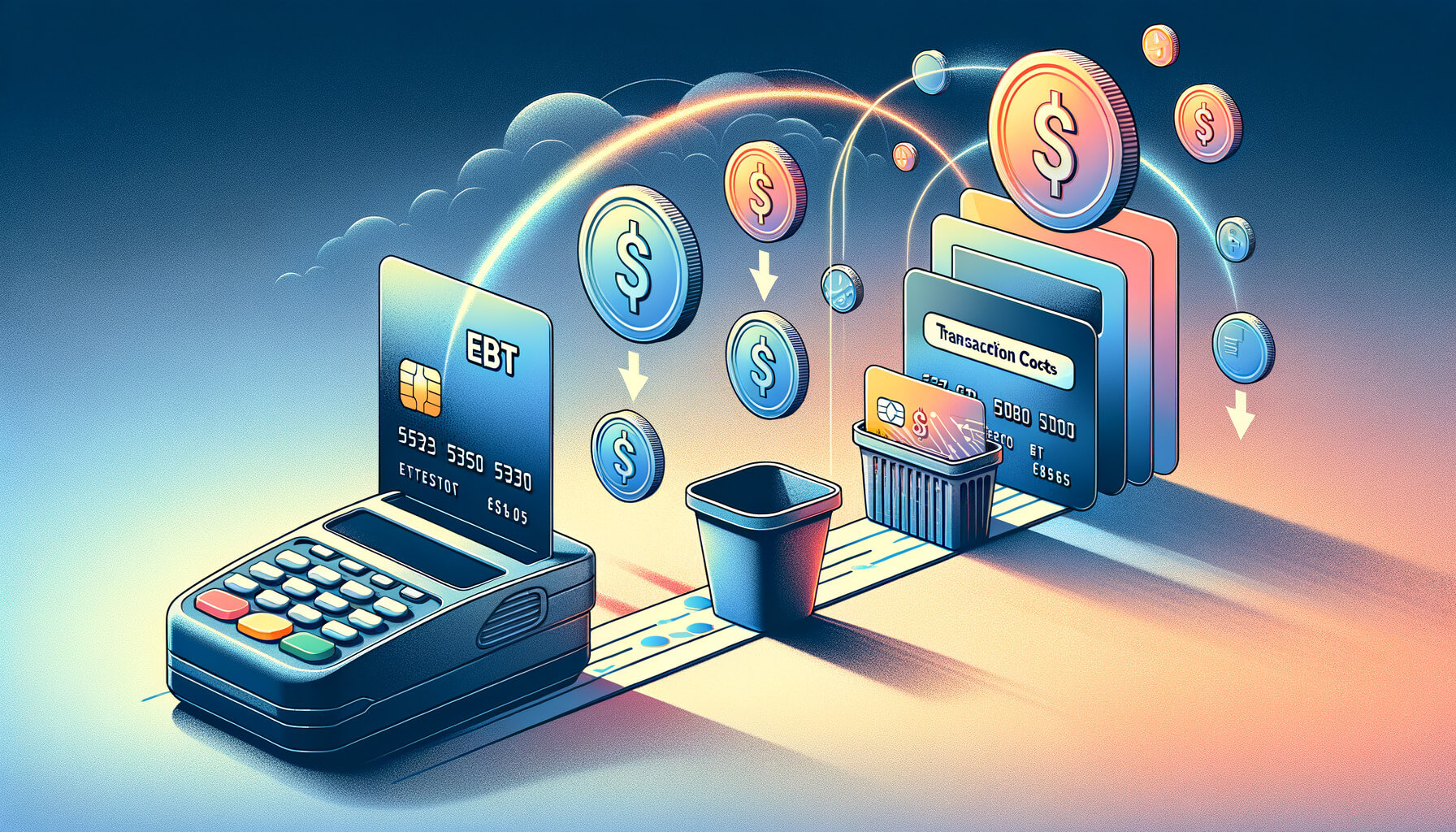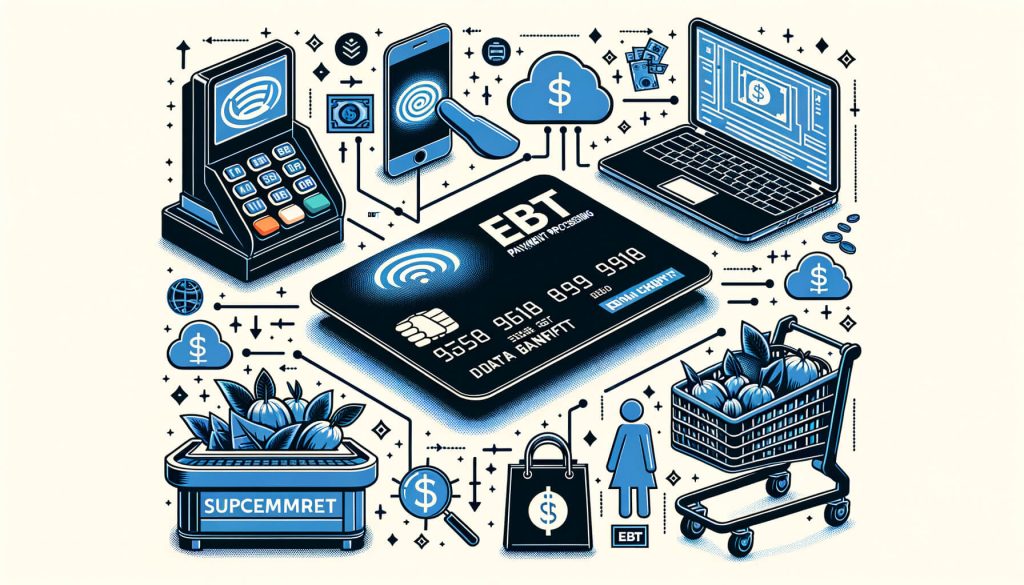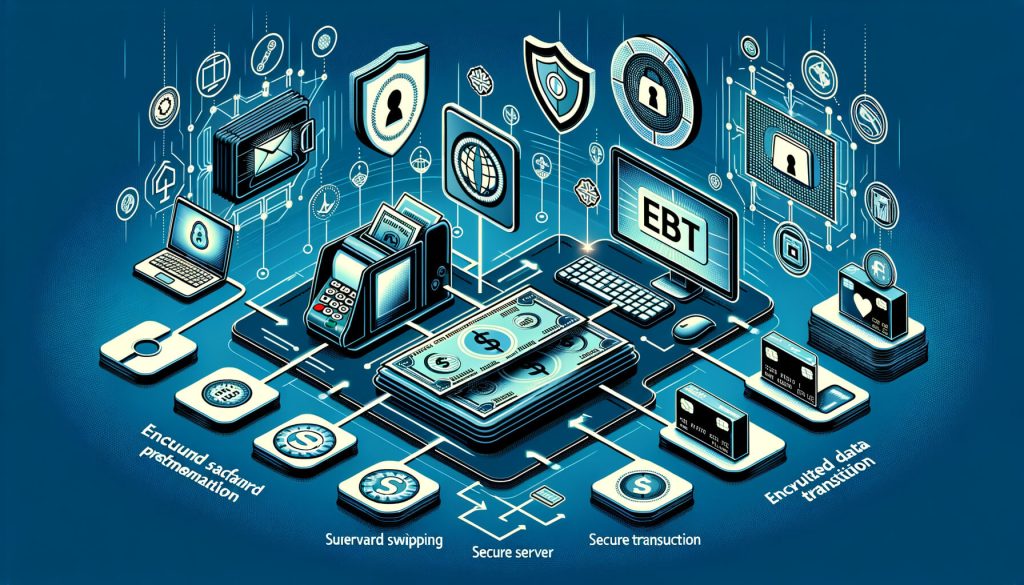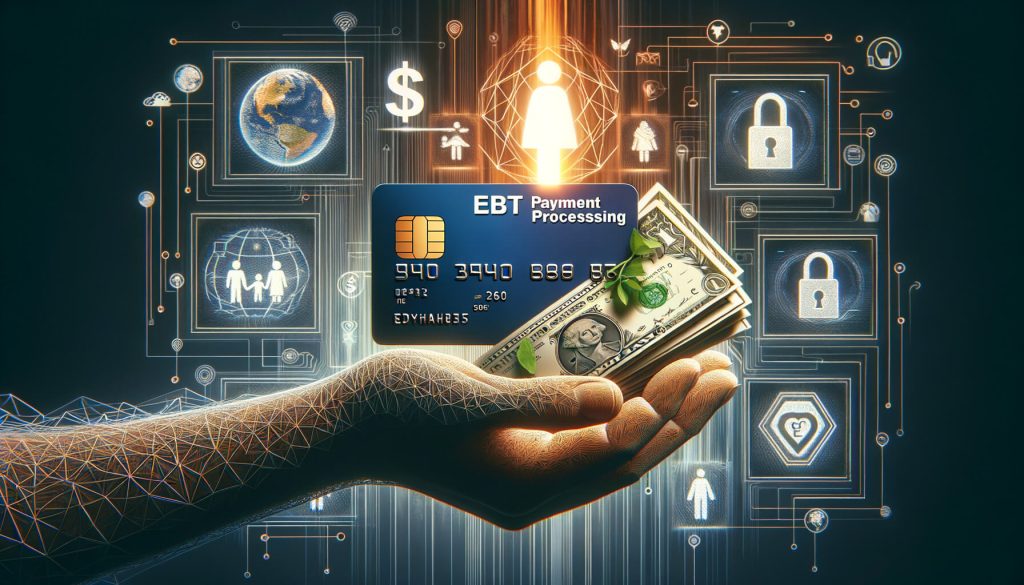
By manoj November 5, 2024
In today’s digital age, electronic payment systems have become an integral part of our daily lives. One such system that has gained significant popularity is Electronic Benefit Transfer (EBT) payment processing. EBT payment processing is a method used to distribute government assistance benefits, such as food stamps and cash assistance, to eligible individuals and families.
This comprehensive guide aims to explore how EBT payment processing reduces transaction costs, its benefits, its role in government assistance programs, and its implications for merchants and government agencies.
Understanding EBT Payment Processing

EBT payment processing is a secure and efficient method of distributing government benefits to eligible recipients. It involves the use of a plastic card, similar to a debit or credit card, which is issued to individuals who qualify for government assistance programs. These cards are loaded with funds by government agencies, and recipients can use them to make purchases at authorized retailers or withdraw cash from ATMs.
1. The EBT Card
The EBT card serves as a convenient and secure way for recipients to access their benefits. It eliminates the need for paper vouchers or checks, reducing the risk of loss or theft. The card is typically issued with a Personal Identification Number (PIN) to ensure only the authorized recipient can access the funds.
2. Authorization and Verification
To ensure the proper use of EBT funds, authorized retailers must be approved by government agencies. These retailers undergo a rigorous verification process to ensure compliance with program guidelines. This helps prevent fraud and misuse of benefits, ultimately reducing transaction costs associated with investigating and resolving fraudulent activities.
3. Real-Time Transaction Processing
EBT payment processing systems enable real-time transaction processing, allowing for immediate verification of available funds and approval of purchases. This eliminates the need for manual verification or delayed processing, resulting in faster and more efficient transactions.
The Benefits of EBT Payment Processing

EBT payment processing offers numerous benefits for both recipients and government agencies. Let’s explore some of these advantages in detail:
1. Convenience and Accessibility
EBT payment processing provides recipients with a convenient and accessible way to access their benefits. They can use their EBT cards at authorized retailers, including grocery stores, farmers’ markets, and even online platforms. This flexibility ensures that recipients can easily purchase essential items, improving their overall well-being.
2. Reduced Administrative Costs
Traditional paper-based benefit distribution systems involve significant administrative costs, including printing and mailing paper vouchers or checks. EBT payment processing eliminates these expenses, resulting in substantial cost savings for government agencies. These savings can be redirected towards improving program efficiency and expanding assistance to more individuals in need.
3. Enhanced Security
EBT payment processing offers enhanced security compared to traditional paper-based systems. The use of PINs and secure electronic transactions minimizes the risk of fraud and unauthorized access to benefits. This not only protects recipients but also reduces the financial burden on government agencies associated with investigating and resolving fraudulent activities.
4. Improved Tracking and Reporting
EBT payment processing systems provide detailed transaction records, allowing government agencies to track and monitor benefit usage effectively. This data can be used to identify patterns, detect potential fraud, and make informed decisions regarding program improvements. The ability to generate accurate reports also simplifies auditing processes, reducing administrative burdens and associated costs.
EBT Payment Processing vs. Traditional Payment Methods

Comparing EBT payment processing with traditional payment methods highlights the significant advantages it offers in terms of reducing transaction costs. Let’s delve into some key differences:
1. Time and Cost Efficiency
Traditional payment methods, such as paper vouchers or checks, require manual processing and verification, resulting in time-consuming and costly procedures. EBT payment processing, on the other hand, enables real-time transaction processing, reducing the time and effort required for verification. This efficiency translates into cost savings for both recipients and government agencies.
2. Fraud Prevention
Traditional payment methods are more susceptible to fraud and misuse. Paper vouchers or checks can be easily counterfeited or stolen, leading to significant financial losses. EBT payment processing, with its secure electronic transactions and PIN-based authentication, significantly reduces the risk of fraud, thereby minimizing transaction costs associated with investigating and resolving fraudulent activities.
3. Accessibility and Convenience
Traditional payment methods often require recipients to physically visit government offices or banks to access their benefits. This can be inconvenient, especially for individuals with limited mobility or those residing in remote areas. EBT payment processing allows recipients to access their benefits through authorized retailers, providing greater accessibility and convenience.
How EBT Payment Processing Reduces Fraud

Fraud prevention is a critical aspect of EBT payment processing. By implementing robust security measures, EBT payment processing systems significantly reduce the occurrence of fraudulent activities. Let’s explore some key ways in which EBT payment processing reduces fraud:
1. PIN-Based Authentication
EBT cards are issued with a unique Personal Identification Number (PIN) that only the authorized recipient knows. This PIN-based authentication ensures that only the rightful recipient can access and use the benefits, minimizing the risk of unauthorized usage or theft.
2. Real-Time Transaction Monitoring
EBT payment processing systems enable real-time monitoring of transactions, allowing government agencies to detect and investigate suspicious activities promptly. Unusual spending patterns or multiple transactions within a short period can trigger alerts, enabling agencies to take immediate action to prevent fraud.
3. Retailer Authorization and Compliance
Government agencies carefully vet and authorize retailers to accept EBT payments. This verification process ensures that only legitimate businesses can participate in the program. Regular audits and compliance checks further reduce the risk of fraudulent activities, protecting both recipients and government funds.
4. Data Analytics and Machine Learning
EBT payment processing systems leverage advanced technologies, such as data analytics and machine learning, to identify patterns and anomalies in transaction data. These technologies can detect potential fraud indicators, such as unusual spending patterns or suspicious transactions, enabling agencies to proactively investigate and prevent fraudulent activities.
The Role of EBT Payment Processing in Government Assistance Programs

EBT payment processing plays a crucial role in government assistance programs, ensuring efficient and effective distribution of benefits to eligible individuals and families. Let’s explore the key aspects of EBT payment processing in government assistance programs:
1. Streamlined Benefit Distribution
EBT payment processing streamlines the distribution of government benefits, eliminating the need for paper vouchers or checks. This simplifies the process for both recipients and government agencies, reducing administrative burdens and associated costs.
2. Targeted Assistance
EBT payment processing allows government agencies to target assistance to specific individuals or groups based on eligibility criteria. This targeted approach ensures that benefits reach those who need them the most, optimizing the allocation of limited resources.
3. Program Integrity
EBT payment processing enhances program integrity by reducing the risk of fraud and misuse of benefits. The secure electronic transactions, PIN-based authentication, and real-time monitoring help maintain the integrity of government assistance programs, ensuring that benefits are used for their intended purpose.
4. Data-Driven Decision Making
EBT payment processing systems generate valuable data that can be used for data-driven decision making. Government agencies can analyze transaction data to gain insights into recipient behavior, identify program inefficiencies, and make informed decisions to improve program effectiveness.
EBT Payment Processing for Merchants
EBT payment processing offers several advantages for merchants, making it an attractive payment option. Let’s explore how EBT payment processing benefits merchants:
1. Expanded Customer Base
Accepting EBT payments allows merchants to tap into a broader customer base. Government assistance programs serve millions of individuals and families, and by accepting EBT payments, merchants can attract these customers and increase their sales potential.
2. Streamlined Transactions
EBT payment processing systems enable fast and efficient transactions, reducing checkout times and improving the overall customer experience. This streamlined process can lead to increased customer satisfaction and loyalty.
3. Reduced Risk of Fraud
EBT payment processing systems provide merchants with a secure payment method, minimizing the risk of fraudulent activities. The authentication measures, such as PIN-based verification, ensure that only authorized recipients can use their benefits, protecting both the merchant and the government funds.
4. Guaranteed Payment
When a customer pays with an EBT card, the payment is guaranteed by the government agency responsible for the benefit program. This eliminates the risk of bounced checks or insufficient funds, providing merchants with peace of mind and ensuring timely payment for goods and services.
EBT Payment Processing for Government Agencies
Government agencies play a crucial role in implementing and managing EBT payment processing systems. Let’s explore how EBT payment processing benefits government agencies:
1. Cost Savings
EBT payment processing systems offer significant cost savings for government agencies. By eliminating the need for paper vouchers or checks, agencies can reduce administrative costs associated with printing, mailing, and processing these documents. These cost savings can be redirected towards program improvements or expanding assistance to more individuals in need.
2. Enhanced Program Integrity
EBT payment processing systems enhance program integrity by reducing the risk of fraud and misuse of benefits. The secure electronic transactions, PIN-based authentication, and real-time monitoring help maintain the integrity of government assistance programs, ensuring that benefits are used appropriately.
3. Efficient Benefit Distribution
EBT payment processing streamlines the distribution of benefits, making it more efficient and convenient for both recipients and government agencies. Real-time transaction processing eliminates the need for manual verification, reducing administrative burdens and associated costs.
4. Data Analytics and Reporting
EBT payment processing systems generate valuable data that can be used for data analytics and reporting. Government agencies can analyze transaction data to gain insights into recipient behavior, identify program inefficiencies, and make informed decisions to improve program effectiveness.
Common Concerns and FAQs
Q1: Are EBT transaction fees lower than credit card fees?
Yes, EBT fees are generally lower and often flat, making them more affordable than the percentage-based fees of credit cards.
Q2: How does EBT reduce fraud-related costs?
EBT transactions require PIN verification, which helps prevent unauthorized purchases and reduces the risk of chargebacks and fraud.
Q3: Can any POS system handle EBT transactions?
No, only certified POS systems approved by the USDA can process EBT transactions, but many EBT-compatible systems are available at low cost.
Q4: Is there a difference in transaction speed between EBT and other payments?
Yes, EBT transactions are typically faster because they have fewer intermediaries and simpler authorization processes than card transactions.
Q5: Does EBT acceptance impact inventory management?
Yes, tracking EBT purchases helps stores manage inventory efficiently by identifying high-demand items among EBT customers.
Conclusion
EBT payment processing offers numerous benefits, including reduced transaction costs, enhanced security, and streamlined benefit distribution. By replacing traditional paper-based systems, EBT payment processing improves efficiency, reduces administrative burdens, and ensures the proper use of government assistance benefits. For recipients, EBT payment processing provides convenience, accessibility, and increased security.
For merchants, it expands their customer base, streamlines transactions, and reduces the risk of fraud. Government agencies benefit from cost savings, enhanced program integrity, and data-driven decision making. Overall, EBT payment processing is a valuable tool in improving the effectiveness and efficiency of government assistance programs, ultimately benefiting both recipients and society as a whole.